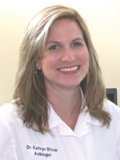
More Hearing Health Articles
Advanced Audiological (Hearing) Testing
Many people with hearing loss often experience added symptoms of dizziness (vertigo), unbalanced hearing between ears, ringing (tinnitus) and/or pressure in the ears. Audiologists are hearing and balance professionals. They play an essential role in the diagnosis and treatment of these symptoms through advanced neuro-diagnostic testing, along with an integral relationship with the patient's medical physician.
Advanced audiological testing is often termed “site of lesion” testing because it is used to determine if a specific hearing loss and related symptoms are sensory (inner ear) or neurological (involving the auditory nerve or brainstem).
Site of lesion tests include the auditory evoked brainstem response (ABR), electrocochleography (ECoG), and evoked otoacoustic emissions (OAEs).
ABR assesses the function of the auditory nerve. This testing is usually performed when there is an asymmetric (uneven) hearing loss, and/or symptoms of tinnitus.
Rapid clicking sounds are produced through ear inserts, which generate an electrical signal traveling along the auditory nerve from the inner ear to the brainstem. Brainwaves generated along the auditory pathway are recorded through electrodes, and analyzed by the audiologist. These recordings can rule out benign tumors (acoustic neuroma) along the pathway of the nerve up to the brainstem.
This test can also be used to approximate hearing thresholds for the high frequency sounds, which is helpful in diagnosing hearing loss in infants and young children when traditional testing methods are not possible. Another name often used for the ABR is brainstem auditory evoked response (BAER).
ECoG testing can be performed alone or in conjunction with the ABR test. When hearing loss is accompanied by vertigo, tinnitus and ear fullness, Meniere's disease should be ruled out. The ECoG is measured through rapid clicking sounds produced through electrode ear inserts.
Reponses are collected and analyzed in the same manner as the ABR. The audiologist is looking for an abnormal electrical pattern within the cochlea (inner ear) that would suggest the presence of Meniere's disease.
OAE is an objective test that assesses the function of the inner ear, specifically the outer hair cells within the cochlea. Emissions from the cochlea occur in normally functioning ears. This involuntary response is generated by a noise stimulus, produced through an ear insert.
The emission is the response returned from the inner ear, which is recorded by a special microphone housed within the ear insert. The audiologist uses this information to screen hearing, to determine if hearing loss is sensory or neural, and to monitor ototoxic medications (medications that can damage the outer hair cells).
Audiologists are licensed and certified, earning advanced training in these highly specialized test procedures. To receive advanced neuro-diagnostic testing, an audiologist or physician must refer you. These tests are generally performed in an audiology clinic, ENT physician's office or hospital setting.
Other Articles You May Find of Interest...
- NEW TECHNOLOGY – Over-the-counter or Prescription Hearing Aids?
- 6 Secrets to Getting Your Stubborn Parent to Try Hearing Aids
- Five Important Reasons To Schedule A Yearly Hearing Exam
- Difficulty Hearing Over The Phone?
- Hearing Loss and Your Overall Health
- Assistive Telecommunications Equipment Provided By the State
- Speech Disability and Using the Telephone

















